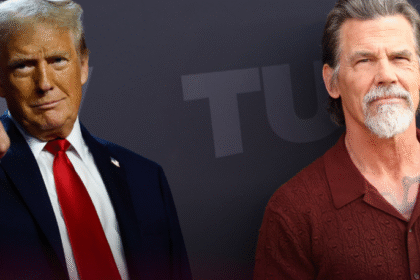The picture of Dwayne Johnson, or The Rock, has been associated with near superhuman size for over 20 years. His strength, a mountain of chiseled muscles that weighed more than 260 pounds, became a key attribute of his international brand, as did electrifying the WWE audiences with his brawn, and dominating the box office as the highest-paid actor in the world. It was the base of his screen character, the physical power of the characters who battled monsters, who moved the earth, who carried series on his big shoulders. This is why his physical change of recent has been so shocking. The mass man has gone through a drastic weight loss program and lost a lot of weight to become a leaner, agile, and possibly a healthier person. According to The Times of India, it is not a simple diet but a total makeover of your lifestyle based on an overwhelmingly potent personal why.
This is not a glamorous story of fitness by a celebrity. It is a lesson in discipline, a career change, and an insight into the shifting definition of health and longevity, even in the fittest men on earth. Following the path of the People Champion to an honorary leader of sustainable wellness demonstrates the previously unknown depths of the man behind the famous raised eyebrow.
The “Why”: More Than a Role A Revelation on Set
The catalyst for this change wasn’t a random New Year’s resolution. It was a moment of stark realization on the set of the upcoming film The Smashing Machine, a biographical drama where Johnson plays legendary MMA and UFC champion Mark Kerr. Kerr, a beast of a man in his own right during his prime in the late 1990s, was known for a different kind of physique—not just pure mass, but the functional, powerful, and leaner build of a mixed martial artist who needed explosive strength and cardiovascular endurance to survive five-minute rounds in the octagon.
To authentically portray Kerr, Johnson couldn’t rely on his classic bodybuilding-style frame. He needed to transform into an athlete. This required a fundamental shift in training and nutrition, moving away from the goal of sheer size and toward a focus on conditioning, agility, and functional power. But beyond the professional requirement, Johnson has hinted at a personal motivation. Maintaining nearly 300 pounds of muscle for years is an incredible strain on the body on the heart, the joints, and the overall system. This transformation appears to be as much about embracing a sustainable and healthy lifestyle for his long-term well-being and his family as it is about a movie role.
Deconstructing the Diet: From Cheat Days to Clean Fuel
Nutrition is the driver of any physical change, and the diet of Johnson changed radically. His old diet was bodybuilding folklore. To sustain his massive physique, he regularly took in excess of 5,000 calories daily in 6-7 meals, an arduous diet that incorporated pounds of cod, steak, rice, and vegetables, which was punctuated every week with his beloved weekly cheat meals, which sometimes consisted of a whole pizza or piles of pancakes.
The cheat meals were the first meals to be drastically reduced to help him lose weight. The caloric intake was also highly monitored with the emphasis on macronutrient balance and not volume. His diet now emphasizes:
- Proteins with Lean: Chicken breast, egg whites, fish, and others are still essential sources of muscle repair and satiety, but are also cooked with low-fat options.
- Complex Carbohydrates: He replaced some of the enormous amounts of white rice with slower carbs, such as sweet potatoes and quinoa, which are also sources of sustained energy without causing a rise in blood sugar.
- Eat More Fibrous Vegetables: Broccoli, asparagus, and spinach fill lunch and dinner plates with vitamins, minerals, and fiber, which can aid digestion and keep him fuller, with less food.
- Strategic Hydration: Metabolism and recovery rely heavily on water intake, and Johnson must have upped his water intake to help him cope with his new training.
The key takeaway is precision. This wasn’t about starvation; it was about eating smarter, using food as fuel for a new type of performance rather than as a tool for sheer mass accumulation.
The New Training Regimen: Functional Strength Over Show Muscle
Once the diet was changed, the exercises were revolutionized. The legendary training of Johnson featured heavy and compound lifts using the methods of bench press, deadlift, and squats that would produce raw power and hypertrophic muscle growth. Although he is not giving up strength training altogether, the emphasis has changed radically.
His new training, which has been designed with his longtime strength and conditioning coach, Dave Rienzi, includes:
- High-Intensity Interval Training (HIIT): Short bursts of all-out effort followed by brief recovery periods. This is incredibly effective for burning fat and improving cardiovascular health without sacrificing muscle.
- MMA-Specific Conditioning: To channel Mark Kerr, Johnson took on the training of a real fighter. This includes pad work, grappling, wrestling drills, and sparring activities that demand explosive power, agility, and a level of cardio that traditional weightlifting simply doesn’t provide.
- Increased Circuit Training: Workouts that chain exercises together with minimal rest keep the heart rate elevated, combining strength and cardio into one efficient, fat-burning session.
- Mobility and Flexibility Work: Often overlooked by strength athletes, mobility became a priority to keep his body agile and prevent injury under the new demands.
The result is a physique that is less about the static pose and more about dynamic movement. He traded some inches on his chest and arms for a defined core, vascularity, and a level of conditioning that allows him to move like the athlete he is portraying.
The Psychological Grind: The Hardest Rep of All
Anyone who has ever attempted a significant body recomposition knows the battle is fought as much in the mind as in the gym. For someone like Johnson, whose identity has been so publicly tied to his size, this shift required immense mental fortitude.
Letting go of the “larger than life” physique meant challenging a key part of his own brand. It required embracing a new, unfamiliar version of himself. The discipline to forgo the epic cheat meals that he and his fans loved, the patience to see results from a new, perhaps less instantly gratifying training style, and the vulnerability to change a winning formula all speak to a powerful growth mindset. This transformation is a testament to his ability to adapt, evolve, and prioritize long-term health over a familiar, yet potentially limiting, image.
A Legacy Reforged: Inspiring a New Generation
Dwayne Johnson’s weight loss journey is impactful because it makes health and wellness relatable, even at a scale the average person can’t comprehend. For years, his physique was an unattainable ideal for most, a monument to genetic fortune and Herculean effort. His new, leaner build, while still incredibly impressive, feels more aspirational. It promotes a different message: that fitness is about feeling good, being healthy, and having the functional ability to enjoy life and take on new challenges at any age.











